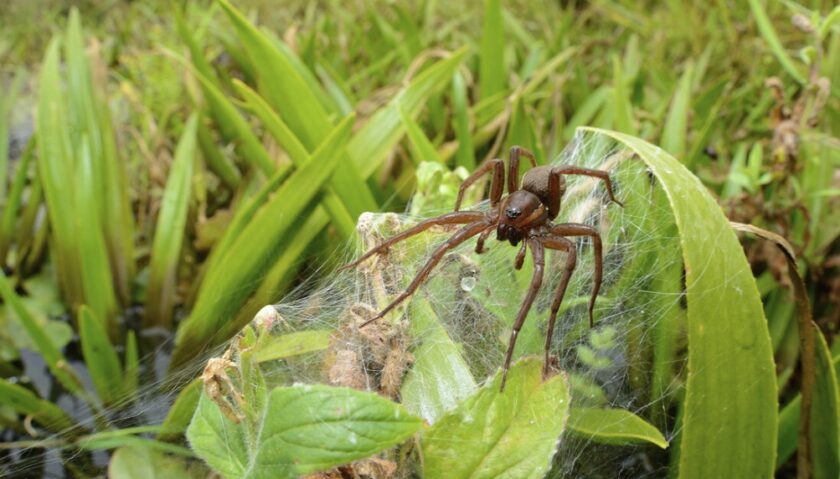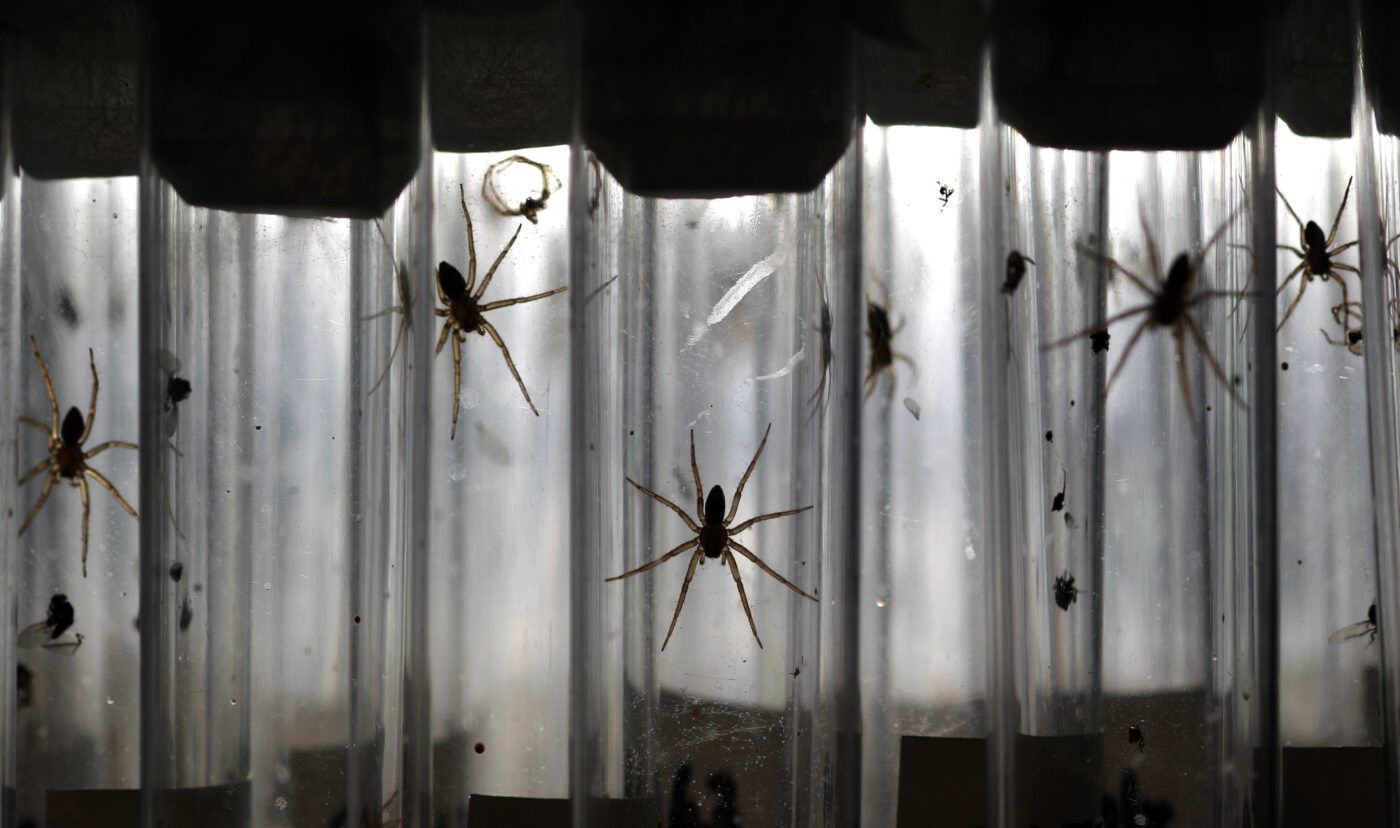Chester Zoo helps bring UK’s largest spider back from the brink

Chester Zoo has played a pivotal role in bringing the UK’s largest spider, the fen raft spider, back from the brink of extinction.
A conservation breeding programme launched in 2011 has led to a remarkable recovery of this unique species, which now boasts over 10,000 breeding females across the country.
The fen raft spider, a semi-aquatic predator that can grow to the size of an adult human palm, is distinguished by a striking white stripe along its body.
Despite its imposing appearance, the spider is harmless to humans and plays a crucial role in maintaining the ecological balance of wetland habitats.
The species’ numbers had dwindled dramatically 15 years ago due to the destruction of its wetland environment, leaving it on the verge of extinction.
In response to this ecological crisis, Chester Zoo joined forces with the Royal Society for the Protection of Birds (RSPB) to establish a conservation breeding programme aimed at saving the fen raft spider.
In 2011, experts at Chester Zoo began rearing hundreds of baby spiders in individual test tubes to prevent them from eating each other, a natural behavior among the species.
“We had to carefully feed each spiderling tiny flies using tweezers,” a spokesperson from Chester Zoo explained.
“It was a meticulous process that required weeks of daily attention in our bio-secure breeding facility.”
Once the young spiders were strong enough, they were released back into their restored natural habitat.

The collaborative effort between Chester Zoo and the RSPB not only focused on breeding but also on the restoration of wetland areas crucial for the spider’s survival.
The spiders were released in their hundreds, and their numbers have continued to grow ever since.
Tim Strudwick, site manager of the RSPB Mid Yare nature reserves, highlighted the importance of these spiders in maintaining the rich aquatic diversity found in grazing ditches.
“These spiders have an important role in maintaining the rich aquatic diversity found in the grazing ditches on our reserves.
The females are impressive in size, but also beautiful – they are truly special to see!”
Today, the fen raft spider population has rebounded significantly, with the RSPB reporting the best year on record.
The resurgence of over 10,000 breeding females marks a major milestone in the species’ recovery.
Unlike most spiders, fen raft spiders do not use webs to capture their prey. Instead, they lie in wait with their front legs resting on a body of water, detecting vibrations from unsuspecting prey through tiny hairs on their legs, known as trichobothria.
This unique hunting method further underscores the spider’s adaptability and role in its ecosystem.
Chester Zoo’s involvement in this conservation effort is part of a broader commitment to preserving endangered species and protecting biodiversity.
The success of the fen raft spider programme stands as a testament to what collaborative conservation initiatives can achieve.
“We’re incredibly proud of the role we’ve played in this conservation success story,” a Chester Zoo representative stated.
“Seeing the fen raft spider population thrive after being on the brink of extinction is truly rewarding.”
Spotted something? Got a story? Email: [email protected]
Latest News
